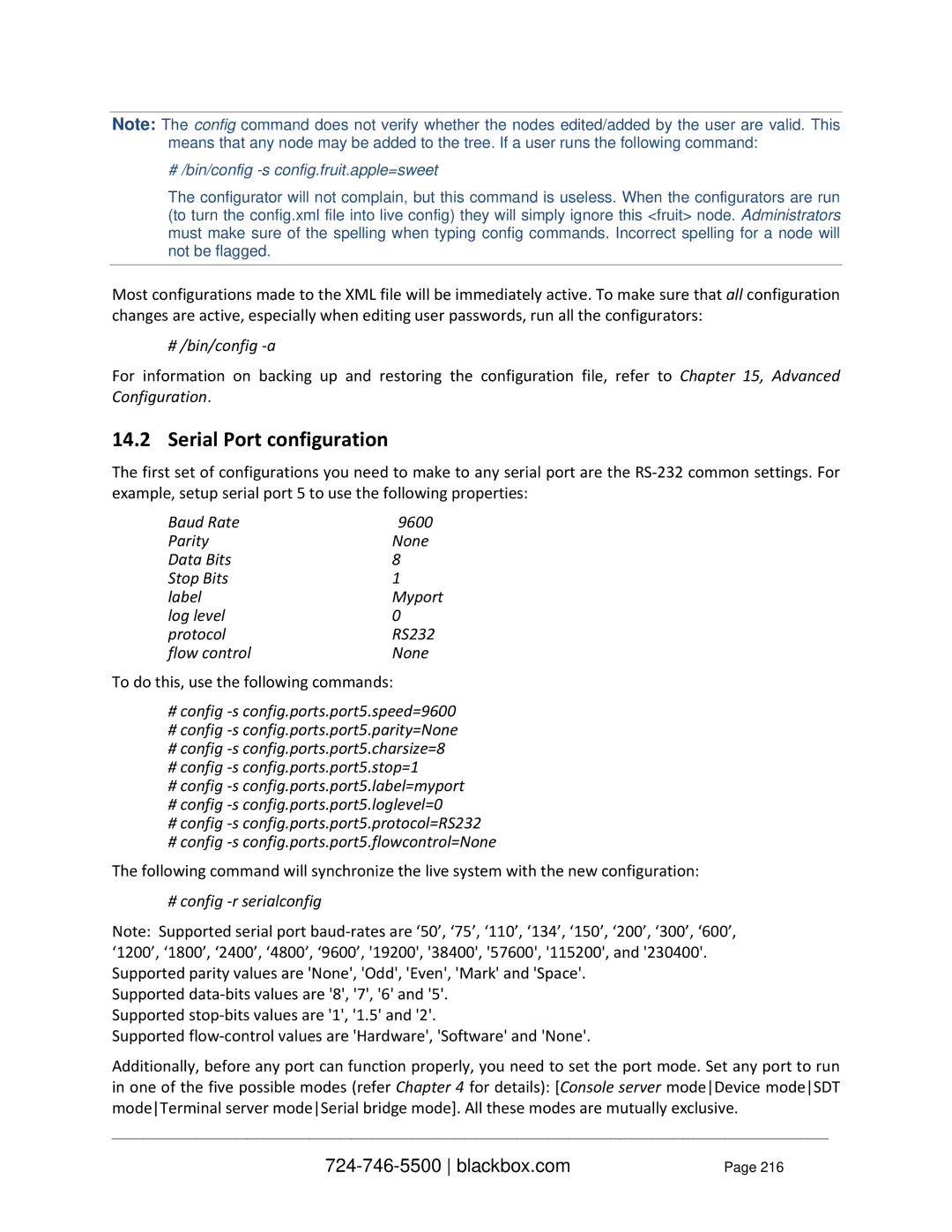
Note: The config command does not verify whether the nodes edited/added by the user are valid. This means that any node may be added to the tree. If a user runs the following command:
# /bin/config -s config.fruit.apple=sweet
The configurator will not complain, but this command is useless. When the configurators are run (to turn the config.xml file into live config) they will simply ignore this <fruit> node. Administrators must make sure of the spelling when typing config commands. Incorrect spelling for a node will not be flagged.
Most configurations made to the XML file will be immediately active. To make sure that all configuration changes are active, especially when editing user passwords, run all the configurators:
# /bin/config
For information on backing up and restoring the configuration file, refer to Chapter 15, Advanced
Configuration.
14.2 Serial Port configuration
The first set of configurations you need to make to any serial port are the
Baud Rate | 9600 |
Parity | None |
Data Bits | 8 |
Stop Bits | 1 |
label | Myport |
log level | 0 |
protocol | RS232 |
flow control | None |
To do this, use the following commands:
#config
#config
#config
#config
#config
#config
#config
#config
The following command will synchronize the live system with the new configuration:
# config -r serialconfig
Note: Supported serial port
Supported
Supported
Additionally, before any port can function properly, you need to set the port mode. Set any port to run in one of the five possible modes (refer Chapter 4 for details): [Console server modeDevice modeSDT modeTerminal server modeSerial bridge mode]. All these modes are mutually exclusive.
_____________________________________________________________________
| Page 216 |
